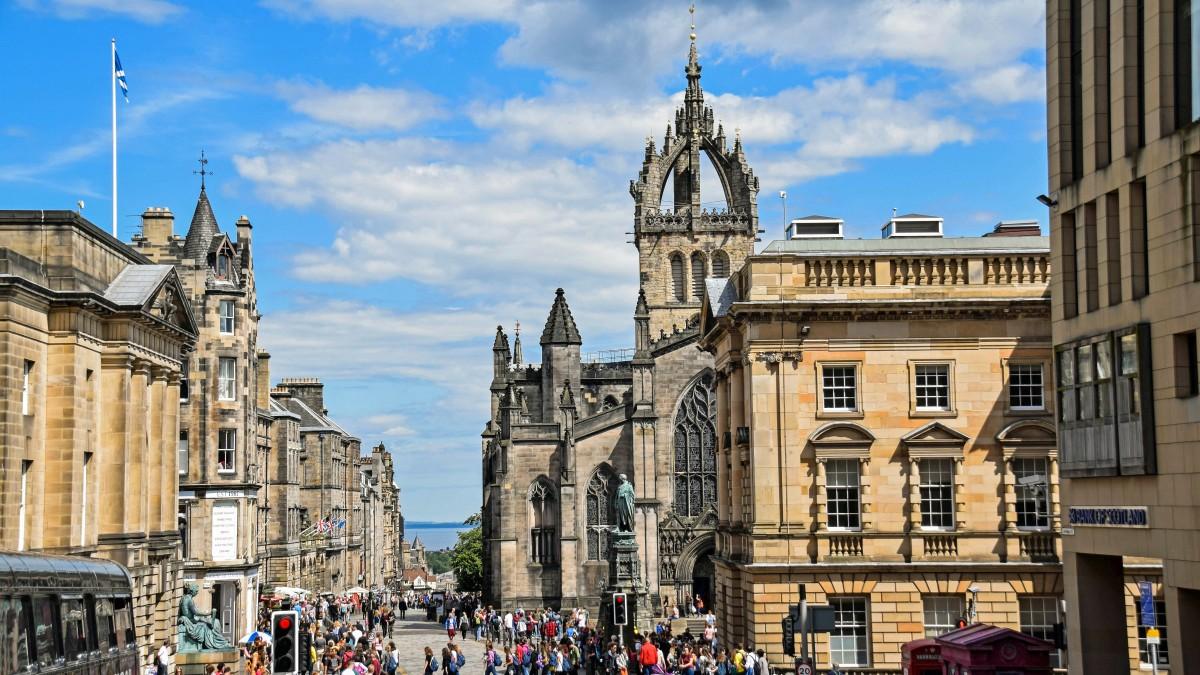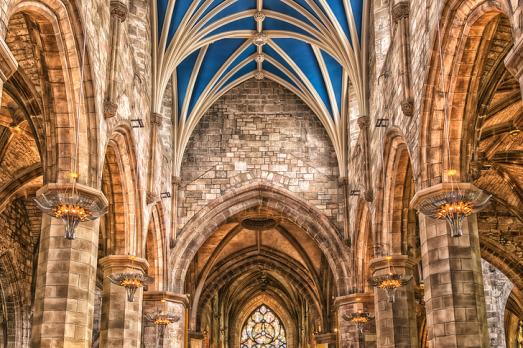Dauid mac Maíil Choluim (King David I) founded St Giles in 1124, during which time the bond between Rome and the Scottish church was becoming closer. St Giles was built on the very eastern edge of Edinburgh and predates most of the Old Town.
It suffered damage in turbulent times in the Middle Ages but by 1390 was restored with help from Edinburgh merchants. The early Scots makar and translator Gavin Douglas became provost of St Giles in 1508. His translation of Virgils Aeneid into Scots (1513) was the first translation of a major classical poem into any modern Germanic language. All of his literary work was composed during his time at St Giles and he is still regarded as a pivotal figure in the development of early Scottish literature.
John Knox was a Scottish priest who converted to Protestantism in the 1540s and fled into hiding and exile. In Geneva he befriended the French reformer John Calvin. On his return to Scotland he marched an army of followers into St Giles and preached there for the first time. The following week he was elected its minister and the building was stripped of its Catholic decoration.
The Scottish Parliament abolished papal authority in 1560 and St Giles 400 years as a Catholic church officially came to an end.
Inside the building the stained glass windows were removed and old church silver was melted down and sold to raise funds for redecoration. In 1745 Bonnie Prince Charlies arrival into Edinburgh was announced at St Giles. The Magistrates of Edinburgh assembled in the church to receive the message commanding them to surrender the city. Bonnie Prince Charlie’s supporters lined the Royal Mile to see him on his way to set up a Jacobite Court at Holyrood Palace.
By 1872 St Giles was in a state of disrepair. The Lord Provost of Edinburgh William Chambers envisioned a revitalised and refurbished church which would play host to prestigious national ceremonies. In 1872 his plans were approved. Centuries old fire damage from the English raid of 1385 was scrubbed from the pillars, the walls were plastered and the floors were relaid with decorative tiles.





